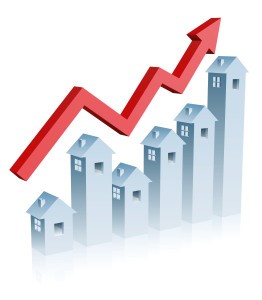When someone says “gayborhood,” many people think of the Castro, West Hollywood, or parts of New York City. While those areas do definitely have a large number of gays and lesbians living in them, did you know that there are other neighborhoods in some unsuspecting cities that actually have higher LGBT population densities? Here are some of the neighborhoods currently at the top of the list.
 Gay and lesbian realtors are going to be very busy in Corona Heights. That’s because an estimated 44.5 percent of all residents there identify as LGBT. That’s fairly high even for San Francisco. Home values here average out to be about $1.4 million, which is actually almost double what homes in the SF metro sell for. Corona Heights is a part of the Upper Market area, but it’s considered a separate neighborhood from the Castro. In fact, the Eureka Valley-Dolores Heights-Castro neighborhood is listed separately on the list. It comes in at number four. Only about 28 percent of its residents identify as LGBT, a number that many may find much lower than expected.
Gay and lesbian realtors are going to be very busy in Corona Heights. That’s because an estimated 44.5 percent of all residents there identify as LGBT. That’s fairly high even for San Francisco. Home values here average out to be about $1.4 million, which is actually almost double what homes in the SF metro sell for. Corona Heights is a part of the Upper Market area, but it’s considered a separate neighborhood from the Castro. In fact, the Eureka Valley-Dolores Heights-Castro neighborhood is listed separately on the list. It comes in at number four. Only about 28 percent of its residents identify as LGBT, a number that many may find much lower than expected.
So what neighborhoods rank as number 2 and 3 on the list? You may be surprised to find that they’re both in Ohio! With 43 percent of its residents identifying as part of the LGBT community, the Necko neighborhood of Columbus comes in at number two. It’s a part of the University District and is located near The Circles and Dennison Place. A number of students live here, which has helped to bring in diversity.
Necko is followed by McPherson, a part of Dayton, Ohio. It has a LGBT population density of 30.6 percent. It’s classified as a Town Historic District and contains a little under 100 homes. If the population density is applied directly to the number of homes, that means about one third of every house in the area is owned by an LGBT person or couple. Many of these homes were built before 1900 and are gorgeous older houses that have been kept up very well.
Finally, rounding out the top five and coming in behind the Casto area is Poinsettia Heights. It’s a neighborhood in Fort Lauderdale, and about 28 percent of all residents are LGBT. It’s set in the northeastern part of the city. These homes were built during the 40s and 50s.
Thinking about moving to one of these neighborhoods? Be ready to pay. Many of them have higher than average property values.
